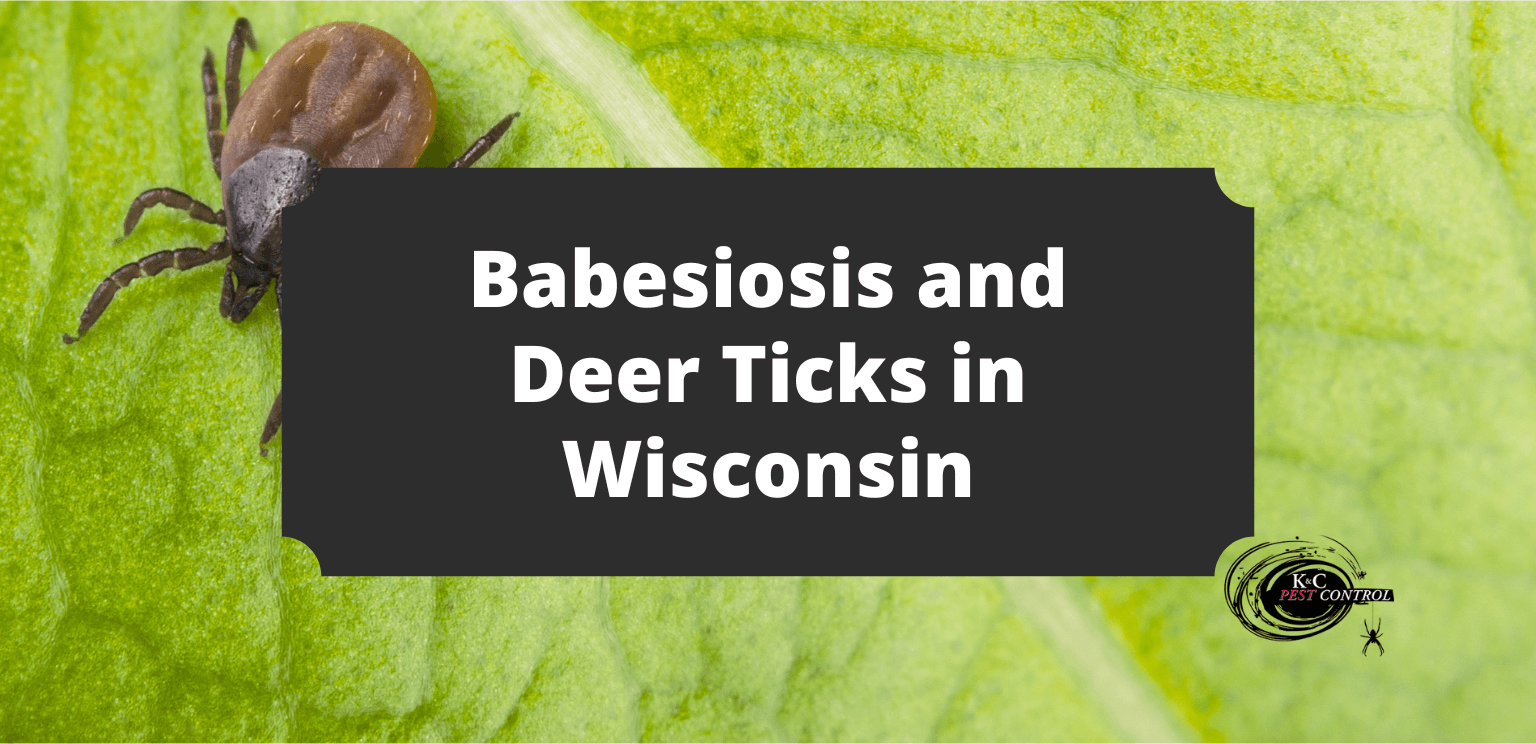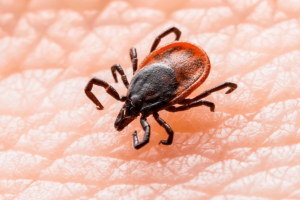Babesiosis and Deer Ticks in Wisconsin

As the weather warms up, pests are once again becoming more prevalent throughout Wisconsin and most of the Midwest. Deer ticks are most active from May to November, so it’s time to pay attention when you’re outside.
Babesiosis is a rare tick-related disease, but the number of cases reported has gone up over the years. Below, we’ll go over what Babesiosis is, its symptoms, and how to prevent it.
What is Babesiosis?
Babesiosis is an infection of the red blood cells in the body caused by microscopic parasites that attack the cells. Most cases in the United States are caused by ticks throughout the Upper Midwest and Northeast.
Black-legged ticks, also commonly called deer ticks, are the main carrier of this disease. A bite from the deer tick carrying the parasite can cause the parasite to enter a person’s bloodstream, infecting them with Babesiosis.

How to Spot Deer Ticks & Bites
Male and female deer ticks have flat, oval bodies that are orange-brown in color. Their legs, mouthparts, and spots behind their head (called a dorsal shield) are a darker brown or black color.
When they’re adults, they only reach about 3 millimeters in size.
If they’ve bitten their host, their abdomen will become darker, and their bodies will expand and become more full-looking.
Babesiosis Symptoms
In cases of Babesiosis, the Centers for Disease Control and Prevention notes people will develop flu-like symptoms:
- Fever
- Chills
- Sweats
- Body aches
- Headache
- Nausea
- Loss of appetite
- Fatigue
Since Babesiosis parasites infect the red blood cells in the body, another symptom of this disease is hemolytic anemia. Hemolytic anemia is the condition of red blood cells that are destroyed faster than they can be made.
Signs of hemolytic anemia include:
- Lack of color in the skin
- Yellow skin or eyes
- Fever
- Weakness
- Dizziness
- Confusion
Contact your doctor if you’ve recently had a tick bite and are experiencing any of the above symptoms.
Does Babesiosis Go Away on Its Own?
Symptoms of Babesiosis typically appear one to four weeks after infection and can last anywhere from several days to several months.
Babesiosis is identified through a blood test and examining red blood cells under a microscope. If infected with this disease, red blood cells will display Babesia parasites. When identified, Babesicosis is treated with prescribed antibiotics.
If you’re asymptomatic, Babesicosis will generally go away on its own.
How to Reduce the Risk of Babesiosis
To reduce the risk of Babesiosis, minimize the amount of exposed skin when walking through the woods or hiking trails.
Wear long pants, socks, and a long-sleeved shirt. Prevent ticks from crawling up your pant legs by tucking your pants into your socks. You’ll also want to wear light-colored clothing, making it easier to see any ticks before they burrow into your skin.
You can also use tick repellents to prevent tick bites. Spray the repellent on both skin and clothing.
After your hike, examine your body before getting back into your vehicle to ensure you’re tick-free.
Contact the Pest Control Specialists at K&C Pest Control
To stay safe this spring and summer from Wisconsin deer ticks, contact the pest professionals at K&C Pest Control. We’ve helped residents and companies throughout Oshkosh and the Fox Valley with pest prevention.
Contact us today for an inspection, evaluation, and protection throughout the pest season!
